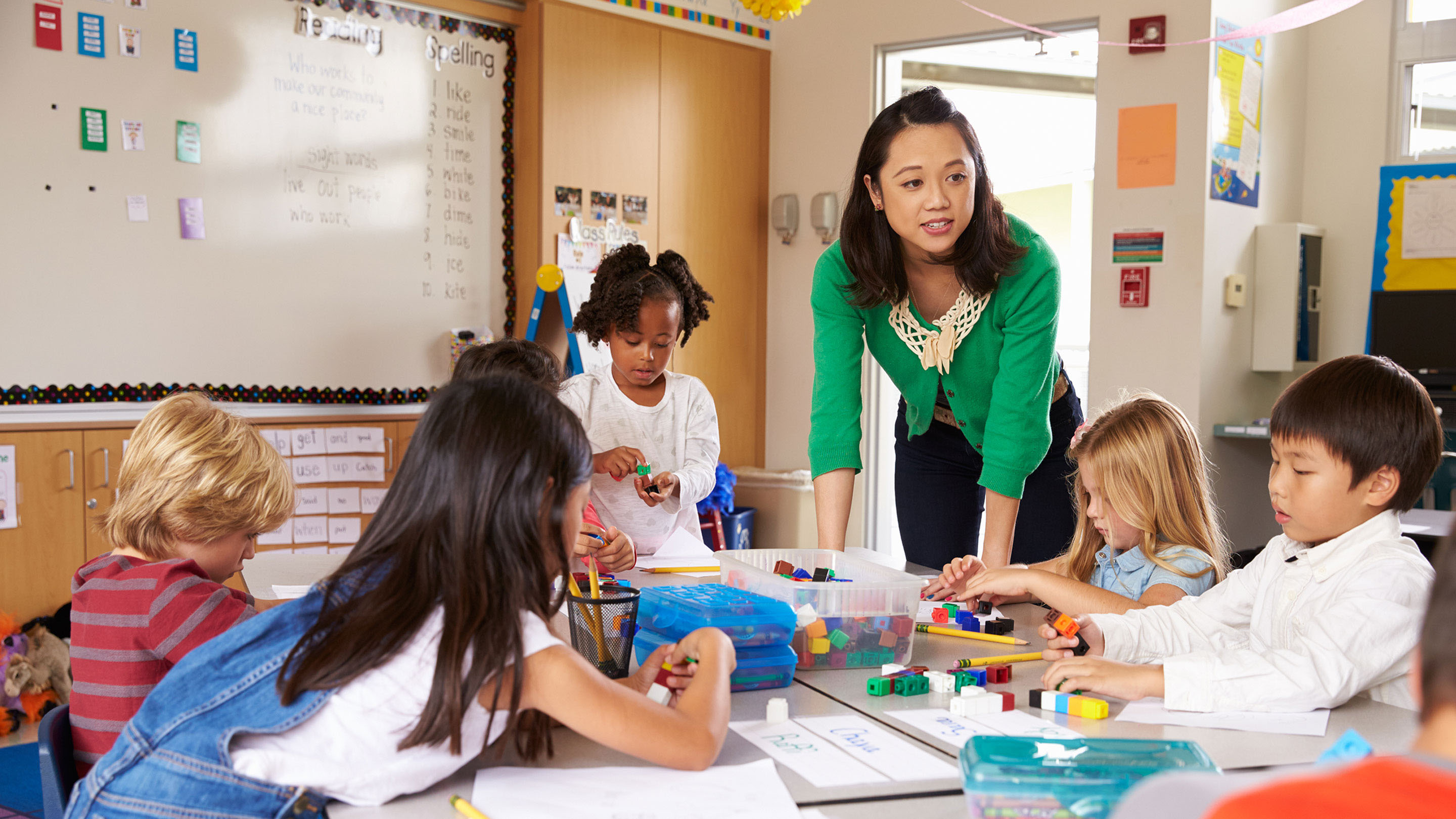Find the Best Primary Science Tuition Singapore for Enhanced Learning
Wiki Article
A Comprehensive Guide to the Different Understanding Methods in Primary Scientific Research Guideline
The exploration of diverse understanding approaches in primary science direction presents a chance for instructors to enhance trainee interaction and understanding significantly. By taking a look at hands-on understanding techniques, inquiry-based techniques, and joint techniques, we can determine efficient techniques that deal with numerous learning styles. Additionally, the integration of modern technology and differentiated instruction plays a vital duty in cultivating a comprehensive setting. The concern continues to be: how can these techniques be efficiently executed in the classroom to optimize their effect? The response depends on a closer evaluation of each strategy and its effects for teaching science.
Hands-On Learning Techniques
Hands-on discovering strategies play a crucial role in primary science instruction, engaging students in active expedition and trial and error. These approaches allow learners to interact directly with phenomena and materials, fostering a much deeper understanding of clinical principles. By making use of manipulatives, versions, and real-life experiments, instructors develop an environment where pupils can observe, assume, and examine their concepts.Such strategies not only enhance comprehension but additionally grow critical reasoning and analytic abilities. When pupils join tasks like constructing straightforward machines, growing seeds, or performing chemical responses, they are encouraged to ask inquiries and look for responses with their very own observations. This experiential method helps to debunk intricate clinical concepts, making them a lot more relatable and obtainable.
In addition, hands-on learning promotes collaboration among peers, as pupils usually operate in teams to carry out experiments or share findings. This synergy not just enhances their knowing experience but also develops vital social skills. Inevitably, integrating hands-on strategies in main scientific research direction fosters a lifelong love of learning and interest about the all-natural world, laying a solid foundation for future scholastic pursuits in scientific research and past.
Inquiry-Based Understanding
Inquiry-based discovering is an educational strategy that motivates pupils to ask concerns, explore phenomena, and create their own understanding of scientific ideas. This technique changes the focus from traditional teacher-led guideline to an extra student-centered experience, where students take the effort in their instructional journey. By promoting inquisitiveness, inquiry-based knowing advertises deeper engagement with the product, permitting students to check out topics in a significant context.In practice, this strategy usually involves hands-on experiments, monitorings, and essential thinking activities that align carefully with the clinical approach. Students are encouraged to formulate hypotheses, style examinations, and assess information, which cultivates necessary abilities such as analytical and analytical thinking. The function of the instructor in this structure is to facilitate exploration, guiding pupils via the questions procedure while encouraging independent thought and collaboration.
Furthermore, inquiry-based discovering supports a feeling of possession over the understanding procedure, encouraging students to pursue knowledge actively. This technique not only improves understanding of scientific ideas however additionally promotes a long-lasting love for discovering, furnishing trainees with the skills needed to browse a significantly intricate globe.
Collaborative Discovering Approaches
Collaborative understanding strategies equip students to engage in meaningful interactions with peers, cultivating a shared responsibility for their instructional outcomes. In key scientific research instruction, these approaches motivate learners to function together to explore clinical concepts, address problems, and perform experiments (primary science tuition Singapore). By taking part in group tasks, students can utilize diverse viewpoints, permitting richer understanding and retention of clinical understanding
One key element of collective learning is the focus on interaction skills. Students need to articulate their ideas, listen proactively to others, and work out concepts, all of which are critical expertises in both real-world and scholastic contexts. This social interaction not just enhances their understanding of clinical concepts however additionally promotes team effort and conflict resolution skills.
When students see the worth of their contributions within a group, they are more likely to advice take possession of their understanding trip. On the whole, including joint understanding strategies in key scientific look what i found research direction cultivates a dynamic learning setting that prepares pupils for future academic and social obstacles.
Modern Technology Assimilation in Science
The integration of technology in key scientific research direction enhances finding out experiences by supplying ingenious tools and sources that sustain various mentor methods, including joint learning - primary science tuition Singapore. Using digital systems, simulations, and interactive applications permits students to involve deeply with clinical concepts, facilitating an extra hands-on method to knowingDigital labs, for example, allow learners to perform experiments safely and efficiently, advertising inquiry-based learning. These devices can mimic real-world clinical scenarios, permitting pupils to picture complex procedures that would certainly be tough to reproduce in a standard class setting. In addition, innovation cultivates communication and partnership among trainees, as they can share searchings for and work with each other on projects with on-line platforms.
Additionally, multimedia discussions and instructional videos can enhance lessons by accommodating varied knowing styles, making abstract ideas extra available. Information evaluation devices also empower trainees to gather and analyze scientific information, strengthening important assuming abilities. In general, the tactical consolidation of modern technology in main scientific research direction not just improves engagement however additionally prepares students for a technologically advanced society, furnishing them with essential skills for future scientific endeavors.
Separated Direction Techniques
Differentiated instruction strategies are essential for resolving the varied demands of students in key scientific research education and learning. These methods allow teachers to tailor their teaching methods to suit differing abilities, interests, and learning designs within the classroom. By using differentiated instruction, teachers can develop a comprehensive setting that fosters involvement and boosts understanding of clinical principles.One efficient technique is to Resources use adaptable grouping, which allows students to collaborate with peers at comparable ability levels or with varying viewpoints. This method encourages peer understanding and advertises critical reasoning. Furthermore, offering options in projects can encourage trainees, permitting them to choose projects that reverberate with their rate of interests while still fulfilling curricular goals.
Additionally, integrating tiered projects is one more valuable method. Deliberately jobs with varying degrees of intricacy, teachers can make certain that all trainees are suitably tested, no matter their efficiency. Utilizing formative analyses to evaluate recognizing further allows educators to adjust their educational methods dynamically, making certain that each learner obtains the support they need.
Inevitably, implementing separated guideline techniques in main scientific research education not only improves pupil understanding results yet also cultivates an enthusiasm for scientific research, preparing students for future academic quests.

Final Thought
In summary, efficient key science guideline necessitates a complex technique that encompasses hands-on discovering, inquiry-based methods, and collective techniques. The combination of modern technology and distinguished direction better caters to diverse discovering designs, fostering an atmosphere helpful to exploration and crucial reasoning.The expedition of varied learning techniques in main scientific research guideline presents an opportunity for teachers to boost student engagement and comprehension significantly.Hands-on knowing methods play an essential duty in key science instruction, engaging students in active exploration and testing.Inquiry-based discovering is an educational strategy that urges pupils to ask concerns, explore sensations, and build their very own understanding of clinical principles.Joint understanding strategies encourage pupils to involve in significant interactions with peers, fostering a common responsibility for their academic end results. Generally, including collective learning techniques in key scientific research direction cultivates a vibrant understanding atmosphere that prepares students for future academic and social difficulties.
Report this wiki page